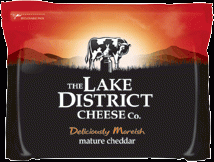Spin the bottle

Try telling workout-junkies in the gym they are part of a vulnerable group that needs regulatory protection, on a par with infants or those in need of special medical nutrition, and the response might be 'Parnuts!' or something along those lines.
To be fair, the thinking behind the framework directive on food for particular nutritional requirements (Parnuts), which no longer applies to sports nutrition, was slightly more sophisticated than this. The same was true for the dedicated draft Sports Foods Directive, which was sunk in 2004 before it made the statute book.
Some manufacturers, however, fear that in a post-Parnuts era, fresh limitations would be set on their options for formulating new products.
At the European Specialist Sports Nutrition Alliance (ESSNA), vice-chair Suzane Leser sums up the current situation: "Initially, the industry was in danger of legislation that was so specific it was restrictive. Now it is potentially in danger of being the opposite: legislation that is so general it does not recognise the specific needs of sports people."
So what are the risks in either direction for the sports drinks industry? And what are those 'specific needs' that require safeguarding? In the current regulatory process, the EU institutions appear to be pointing in the same direction: towards regulation of sports products within general food legislation. That was the outcome advocated by the ENVI Environment, Public Health & Food Safety Committee of the European Parliament (EP) in February. It is also ESSNA's favoured solution.
The European Dietetic Food Industry Association (IDACE) is an industry body with a rather different take on sports regulation. "Our view has been that the Nutrition & Health Claims Regulation (NHCR) is not necessarily the best way to regulate sports foods," says board director Roger Clarke.
At Council of Ministers level, this has been a view shared by France and Germany, plus one or two other Member States. "They feel strongly that sports should be regulated separately, to ensure consistency and correct information for consumers on what they are buying," says Clarke.
Despite the current direction of travel in the EP, this Franco-German agenda may have been temporarily filed away rather than binned. As ESSNA points out, while going along with the compromise position, the Council has also asked the European Commission (EC) to prepare an assessment of whether specific legislation is, after all, still necessary.
"Such a proposal is concerning," says Leser. "The proposed legislation could, in reality, maintain the status quo of legal uncertainty and diverging national legislation." Without clear decisions at EU level, Member States could still try to justify national rules on the grounds of public health and consumer protection.
ESSNA, which represents many European small- and medium-sized enterprises (SMEs) in the sector, explains why separate sports nutrition regulation would be unwelcome. The 2004 draft directive proposed four product areas, around carbohydrate-based foods and solutions, and protein-based concentrates and foods, where thresholds were set for key components. "Such strict legislation would have had a serious impact on the sector, particularly on SMEs, which rely to a greater extent on innovation than large firms," argues Leser, who is also nutrition manager for lifestyle products at Volac.
In fact, even IDACE now concedes that general food regulation is the most likely outcome. But Clarke is concerned that sports foods should be given a "soft landing", particularly with regard to the NHCR. As he puts it: "Some guarantees need to be given. The NHCR wasn't designed to simply absorb a whole new set of products. It's like a heart transplant. You need to make sure all the tubes are attached in the right place."
The innovation challenge
One of the challenges for the future is that 'innovation' in a sports context is a highly charged concept. The links between EU regulation and the World Anti-Doping Code would be of critical importance, says Clarke. "Any regulation would need to start to lay down rules about which products and components are authorised and which are not, as well as procedures for new products," he points out.
The breadth of, and variety within, the 'sports' category is of course one of the chief reasons why the industry struggles to speak with a single voice. At one extreme, elite athletes are being provided with ever more specialised, targeted nutrition, while at the other, there is an increased blurring between mass-market 'sports' drinks and other soft-drink sub-categories, notably energy drinks.
The latter tendency is exemplified by Olympics sponsor Coca-Cola's Powerade brand, the mainstay of which is its Ion4 isotonic drink. But around a year-and-a-half ago, the firm added the Powerade Zero variant which, despite being under the same brand name, is classified by Coca-Cola as a 'fitness drink'.
Coca-Cola's director of scientific and regulatory affairs for north western Europe, Helen Munday, says the company's concerns are different from those of more niche producers. "We are all about scale," she says. "We think that as long as enough latitude is given under general food law for sports products to make claims, that will be sufficient." Rather mysteriously she adds: "We will still find intelligent ways which allow us to innovate."
There are concerns, though even for a firm with just one sports drink under its belt. "General food regulation might make it challenging, for instance, if a product is designed for sports purposes, to include only a small amount in the formulation when, under the NHCR, a higher percentage is required to make a claim," she says. "We'd want the needs of sports nutrition explicitly to be given more latitude."
ESSNA, too, has its concerns. "There are a number of areas under general food law that could represent threats, if not adapted," Leser says. "These include: nutrient profiles, the assessment of claims, regulation of food information, and fortification."
With regard to the risks of claims assessment, she cites the example of sodium. In fact, a claim saying it contributed to "the maintenance of normal muscle function" elicited a positive opinion from the European Food Safety Authority. Despite this, it was decided that use of the claim "would convey a conflicting message to consumers", Leser reports.
"This claim should have been authorised and restricted to sports nutrition products," she argues, adding that a similar sports-specific claim for caffeine would also have been possible.
As Coca-Cola's Munday points out, 'energy' is another marketing term that has fallen foul of the regulators, at least when it is related to calorie intake. "It's not a permitted nutrition claim," she says. "And it's not ever likely to be one. No new products will be able to use the term 'energy' if they contain calories."
ESSNA's Leser draws attention to an ENVI Committee amendment calling on the EC to establish just how potential mismatches between general food law and sports requirements can be avoided. This would effectively be performing the "heart transplant" that IDACE's Clarke talks about.
One lapse of concentration in this delicate operation, and sports foods regulation could be hospitalised indefinitely. It might even be sent back to the intensive care department of dedicated legislation.















